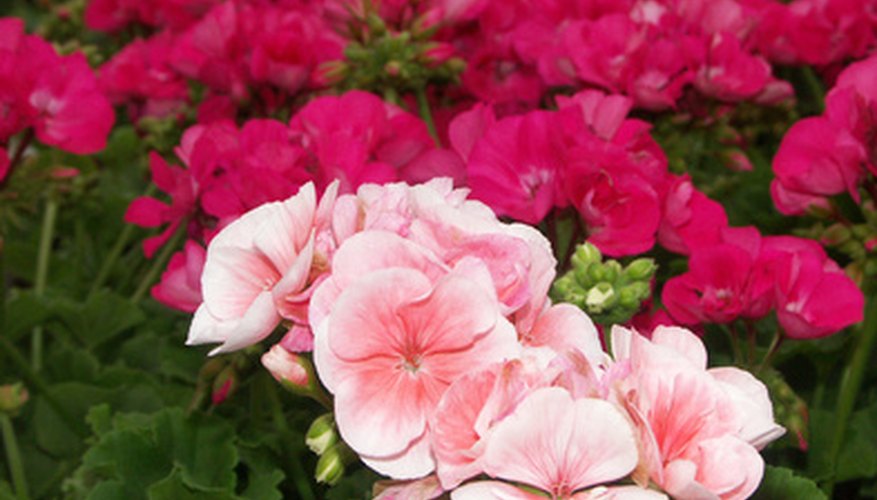Geraniums are popular flowering plants, prized for their colorful blooms and fragrant foliage. However, the appearance of black spots on geranium leaves is a common issue that can detract from their beauty Understanding what causes these spots, and how to treat and prevent them, is key to maintaining healthy geranium plants
What Causes Black Spots on Geranium Leaves?
There are several potential causes of black spots on geranium foliage
-
Fungal diseases – Common culprits include botrytis, alternaria, and rust. These fungi thrive in moist conditions.
-
Bacterial diseases – Bacteria like Xanthomonas can infect leaves, especially when water sits on them.
-
Environmental factors – Excess moisture, poor air circulation, and high humidity invite fungal and bacterial growth.
-
Pest damage – Insects like thrips can leave behind spots as they feed on leaves.
-
Nutrient deficiencies – Lack of nutrients like nitrogen leads to black spotting.
-
Sunscald – Intense sunlight burns leaf tissue, creating black marks.
-
Chemical damage – Pesticides or fertilizers can damage leaves if misapplied.
Recognizing Symptoms of Black Spots
-
Small black or brown spots dotted on leaves, sometimes with yellow halos
-
Enlarged black lesions that run together
-
Powdery black fungal spores on leaf undersides
-
Withered, yellowed leaves that drop prematurely
-
Sunken, dry dead patches on leaves
-
Crunchy, damaged areas of leaf tissue
The Role of Growing Conditions
Environmental conditions greatly influence the development of black spots:
-
Overwatering – Invites fungal and bacterial diseases.
-
Wet foliage – Creates optimal conditions for infection.
-
Poor air flow – Allows fungal spores to proliferate.
-
High humidity – Promotes growth of fungal pathogens.
-
Poor drainage – Leads to root rot and stressed plants.
-
Crowded plants – Impedes air circulation and light penetration.
-
Hot weather – Leads to sunscald on leaves.
Importance of Proper Care
Preventing black spots requires paying close attention to geranium care:
-
Water at soil level to keep leaves dry.
-
Apply fertilizer according to label directions.
-
Prune regularly to increase air flow and light.
-
Remove affected leaves/debris to prevent spread.
-
Use sterile pruning tools to limit transmission.
-
Check for pests like thrips that can vector diseases.
-
Ensure potting mix drains well and doesn’t stay wet.
-
Give plants adequate sunlight without burning leaves.
-
Space plants appropriately to allow air circulation.
Treatment and Prevention Methods
Treatments:
-
Remove and destroy severely infected plants.
-
Apply copper fungicide spray to protect healthy plants.
-
Use insecticidal soap to control pest populations.
-
Leach soil and apply fresh fertilizer if nutrients are deficient.
Prevention:
-
Water at the base, avoid wetting foliage.
-
Allow soil to partially dry between waterings.
-
Apply layer of mulch to prevent soil splashing onto leaves.
-
Prune leaves and stems showing early spotting.
-
Improve air flow and spacing between plants.
-
Reduce humidity levels with fans/ventilation if needed.
-
Scout regularly for pests like thrips.
-
Avoid overhead watering and control weeds/grass.
Promoting Geranium Health
Taking a proactive approach is key to preventing problematic black spots:
-
Start with disease-free cuttings or plants from reputable sources.
-
Check for certification programs like “Elite” varieties.
-
Plant in sterile, well-draining commercial potting mix.
-
Apply slow-release granular fertilizer at planting time.
-
Give plants ample space for air circulation and light penetration.
-
Inspect regularly and remove any diseased plant parts.
-
Keep an eye out for pests and treat promptly if found.
-
Prune back dense growth to allow interior airflow.
-
Move plants under cover if extreme weather is forecast.
Keeping geraniums actively growing through proper care and quick treatment of any issues will help avoid the headache of black leaf spots. With vigilance and preventative care, you can enjoy spot-free, thriving geranium plants.
Geranium Problems, Pests and Diseases (And How to Fix Them)
FAQ
How do you treat black spots on geraniums?
How do you treat black spots on leaves?
How do you treat fungal disease on geraniums?
Why are my geranium leaves turning black?
Why are my geranium leaves blotchy?
Blotches or spots on geranium leaves are generally indicative of a disease or pest issue. Fungal diseases, such as leaf spot or rust, can cause brown or black spots on the leaves. On the other hand, pests like aphids or spider mites can lead to small yellow spots on the leaves.
What is leaf spot on geraniums?
Leaf spot is a bacterial disease that affects geraniums. The disease is caused by several species of bacteria that thrive in warm and humid conditions. The first sign of leaf spot is small, water-soaked spots on leaves. As the disease progresses, these spots can turn brown or black and develop a yellow halo around them.
How do you know if geraniums are dying?
One of the most common symptoms of geranium diseases is the appearance of black spots on the leaves. These spots can be oval or irregular in shape, and may have a yellow border. In some cases, the leaves may also turn brown or yellow, and eventually wilt and die.
- A Complete Guide to Caring for Yuki Cherry Blossom Shrub - January 23, 2025
- Identifying Red Hot Poker Seeds: What to Look For When Harvesting Torch Lily Pods - January 23, 2025
- A Complete Guide to Harvesting Evening Primrose Seeds - January 23, 2025

